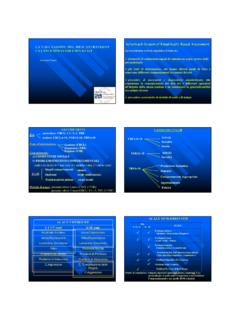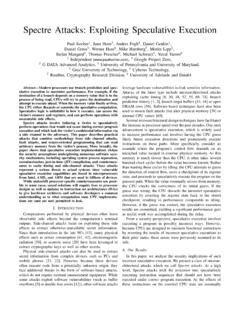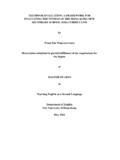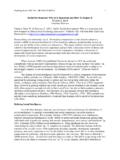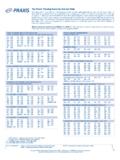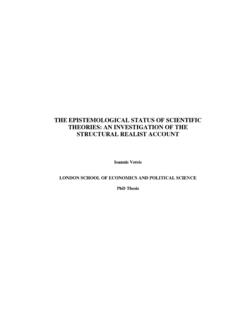Transcription of Positive Psychological Assessment: A practical ...
1 Positive Psychological assessment : A practical introduction to empirically validated research tools for measuring wellbeing. Dr. Aaron Jarden 10th September 2011. Aaron Jarden 2. Contents assessment Measures The Happiness Measures (HM). The Satisfaction with Life Scale (SwLS). The Temporal Satisfaction with Life Scale (TSWLS). The Subjective Happiness Scale (SHS). The Gratitude Questionnaire (GQ-6). The Adult Hope Scale (AHS). The Meaning in Life Questionnaire (MLQ). The Flourishing Scale (FS). The Scale of Positive and Negative Experience (SPANE). The Short Grit Scale (GRIT). The Curiosity and Exploration Inventory-II (CEI-II). The Strengths Use and Current Knowledge Scale (SUCK). The Life Orientation Test-Revised (LOT-R). The Brief Resilience Scale (BRS). The Subjective Vitality Scale (VS). The Cantril Self-Anchoring Striving Scale (CSASS). The Valued Living Questionnaire (VLQ).
2 The Scales of Psychological Wellbeing (SPW). The Centre for Epidemiological Studies Depression Scale (CES-DS). The Depression, Stress, Anxiety Scale (DASS21). The Loneliness Scale (LS). Great Web Resources Other Scales to Consider Note: Always check copyright of scales before use! 3. The Happiness Measures The Happiness Measures (HM) (Fordyce, 1988), also known as the Fordyce Emotion Questionnaire, is a measure of emotional wellbeing that provides an indication of a person's perceived happiness, and measures the affective component of SWB. The HM consists of two questions on happiness. The first item measures happiness on a happiness/unhappiness scale'. Respondents choose from 11 descriptive phrases on a 0 to 10 scale. These descriptors range from (0) extremely unhappy', to (5). neutral', to (10) extremely happy', and measure perceived quality of general happiness. The second item is an estimate of the percentages of time respondents feel happy, unhappy, and neutral.
3 With both items, the HM assesses both intensity and frequency of affect; the first question measuring intensity, and the second item's percentage estimates measuring frequency. In scoring the HM, the scale score (item one) and three percentage estimates (item two) are used directly as raw scores. A combination score can also be calculated, which combines the scale score and percentage happy score in equal weights (combination score = [scale score * 10 + happy%]/2). However, this score is seldom reported in the literature. As an example, reported norms for community college students with a mean age of 26 years include a HM scale mean score of (SD =. ), a percentage happy mean score of (SD = ), a percentage unhappy mean score of (SD = ), and a percentage neutral mean score of (SD. = ). Fordyce commented that it would be safe to classify the HM as the most thoroughly analyzed wellbeing measure developed in the field (1988, p.)
4 81), including over 1,500. administrations, and that it is considered by some to be the granddaddy' of them all [of happiness measures] (1988, p. 65). Fordyce further noted that from the collected data, it would appear that the Happiness Measures demonstrates strong reliability;. remarkable stability; relative freedom from response, sex, age, and race bias; and an exceptionally wide background of evidence supporting it's convergent, construct, concurrent, and discriminative validity (1988, p. 81-82). Diener reviewed 20 happiness and wellbeing instruments and concluded that the HM, in comparison to other measures of wellbeing, has the strongest correlations with daily affect and life satisfaction (1984), and is a reliable and valid test that should receive more widespread use (1984, p. 549). The HM takes approximately 2 minutes to complete. Key Reference Fordyce, M. W.
5 (1988). A review of research on The Happiness Measures: A sixty second index of happiness and mental health. Social Indicators Research, 20, 63-89. More Information (the key 1988 articles is available on this website as well). 4. The Happiness Measures 5. The Satisfaction with Life Scale The Satisfaction with Life Scale (SwLS) (Diener et al., 1985) is a five item measure that assesses an individual's global judgement of life satisfaction as a whole. The SwLS measures the cognitive component of SWB, and provides an integrated judgement of how a person's life as a whole is going. In completing the SwLS, participants rate five statements ( In most ways my life is close to my ideal , the conditions of my life are excellent , I am satisfied with my life , so far I have gotten the important things I want in life , and If I could live my life over, I would change almost nothing ) on a seven point Likert scale, ranging from (1) strongly disagree , to (4) neither agree nor disagree , to (7) strongly agree.
6 The five items are keyed in a Positive direction so that responses can be added to calculate a total score, which ranges from 5 to 35. Pavot and Diener (2008) report that scores from 5 to 9 indicate that an individual is extremely dissatisfied with life, from 10. to 14 dissatisfied with life, from 15 to 19 slightly dissatisfied with life, that a score of 20. indicates neutral life satisfaction, from 21 to 25 slight satisfaction with life, from 26 to 30 satisfaction with life, and from 31 to 35 extreme satisfaction with life. The SwLS has been used in hundreds of studies and has demonstrated good psychometric properties (Pavot & Diener, 2008; Pavot, Diener, Colvin, & Sandvik, 1991). Hayes and Joseph (2003) reported an adult mean score of (SD = ), Chang and Sanna (2001) reported mean scores for adults in international and cross- cultural samples of (SD = ) for males and (SD = ) for females, and Gannon and Ranzijn (2005) reported an adult mean of (SD = ).
7 For a complete review of psychometric properties and a full discussion of associated issues, see Pavot and Diener (1993, 2008). The SwLS takes approximately 2 minutes to complete. Key Reference Diener, E., Emmons, R. A., Larson, R. J., & Griffin, S. (1985). The satisfaction with life scale. Journal of Personality assessment , 49, 71-75. More Information ~ 6. The Satisfaction with Life Scale Below are five statements that you may agree or disagree with. Using the 1-7 scale below, indicate your agreement with each item by placing the appropriate number on the line preceding that item. 7 = Strongly agree 6 = Agree 5 = Slightly agree 4 = Neither agree nor disagree 3 = Slightly disagree 2 = Disagree 1 = Strongly disagree _____ In most ways, my life is close to my ideal. _____ The conditions of my life are excellent. _____ I am completely satisfied with my life. _____ So far, I have gotten the most important things I want in life.
8 _____ If I could live my life over, I would change nothing. _____ TOTAL. 7. The Temporal Satisfaction with Life Scale Different from the more well-known Satisfaction with Life Scale. Assesses past, present and future life satisfaction. Simply, it provides an integrated judgement of how a person's life as a whole has gone, is going, and will go. Measures the cognitive component of subjective wellbeing. Useful for assessing affective forecasting ability See Daniel Gilbert's work here. Scoring = Sum first 5 items for Past Life Satisfaction, next 5 items for Present Life Satisfaction, and last 5 items for Future Life Satisfaction. Component scores range from 5 to 35. Key Reference Pavot, W., Diener, E., & Suh, E. (1998). The Temporal Satisfaction with Life Scale. Journal of Personality assessment , 70, 340-354. 8. The Temporal Satisfaction with Life Scale These statements concern either your past, present, or future.
9 Using the scale, indicate your agreement with each statement. 7 = Strongly agree 6 = Agree 5 = Slightly agree 4 = Neither agree nor disagree 3 = Slightly disagree 2 = Disagree 1 = Strongly disagree 1. If I had my past to live over, I would change nothing. _____. 2. I am satisfied with my life in the past. _____. 3. My life in the past was ideal for me. _____. 4. The conditions of my life in the past were excellent. _____. 5. I had the important things I wanted in my past. _____. 6. I would change nothing about my current life. _____. 7. I am satisfied with my current life. _____. 8. My current life is ideal for me. _____. 9. The current conditions of my life are excellent. _____. 10. I have the important things I want right now. _____. 11. There will be nothing that I will want to change about my future. _____. 12. I will be satisfied with my life in the future. _____.
10 13. I expect my future life will be ideal for me. _____. 14. The conditions of my future life will be excellent. _____. 15. I will have the important things I want in the future. _____. Pa = _____ Pr = _____ Fu = _____. 9. Subjective Happiness Scale The Subjective Happiness Scale (SHS) (Lyubomirsky & Lepper, 1999) is a four item measure of global subjective happiness. Whilst other measures assess the affective ( , the HM) and cognitive ( , the SwLS) components of SWB, the SHS measures SWB as a whole. Lyubomirsky and Lepper claim that the SHS reflects a broader and more molar category of wellbeing and taps into more global Psychological phenomena (1999, p. 139). In completing the SHS, respondents rate four items on different Likert scales, each ranging from 1 to 7. Participants are asked to circle the point on the scale that you feel is most appropriate in describing you'.

